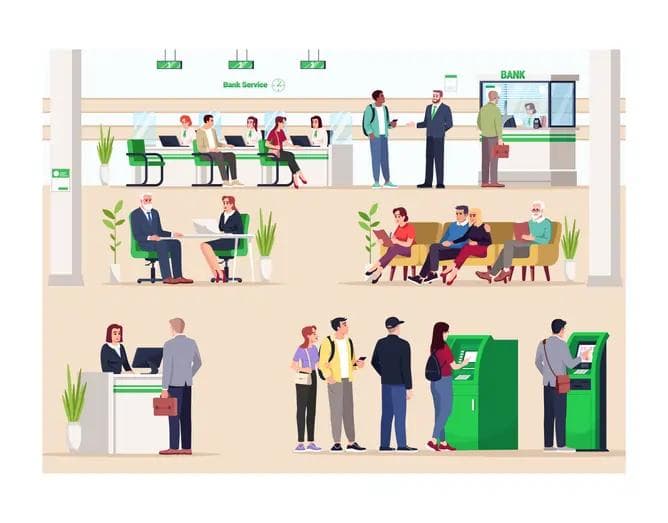HOW TECHNOLOGICAL INNOVATIONS WILL DISRUPT THE FACE OF BRANCH BANKING?
HOW TECHNOLOGICAL INNOVATIONS WILL DISRUPT THE FACE OF BRANCH BANKING?
Published by Gbaf News
Posted on April 27, 2017

Published by Gbaf News
Posted on April 27, 2017

Bhupender Singh, CEO of Intelenet Global Services, explores the future of branch banking and enhancing the customer experience through technology
A wave of digital disruption has swept across the mortgage industry, with firms looking towards the latest technology to improve their offerings. The rise of online banking has seen traditional players closing down branches to cut costs and make way for a more digital model, as well as to keep up with challenger banks and Fintech players. Solely focusing on digital might be a simple solution, but traditional banks need to pay attention to what will differentiate them from their more disruptive competitors.
Despite the digital surge and a greater demand for online services from banks, consumers still desire face-to-face interaction with staff when visiting a bank branch, especially when attempting to take out a mortgage.[1]Although the natural next step may lead to online banking services, some customer needs are left unmet. The human touch is truly irreplaceable as customers still crave interaction when making major financial decisions.
Traditional banks carry the advantage of having a strong existing customer-base and brand recognition. Banks must consider ways to optimise their customer offerings,by first embracing the latest technology available, such as workflow automation tools and next-generation CRM, as well as innovative analytics, to improve their digital capabilities. With the efficiency savings made from back-end processes, banks can make room for implementing next-generation technologies at the front-end.
Next-generation technology is heading in a direction where it will be possible to combine both the full benefits of online banking and face-to-face customer services. The future of branch banking, as we see it, could see banks moving towards a mobile branch model. One option could be a mobile advisor workforce, where customers can manage their services through a mobile app, and maximise the effect of customer facing staff.
Our Radius™ tool exhibitions similar capabilities, in the sense that banks can allocate mobile teams to nearby appointments. The next-generation technology available can also enable banks to connect roaming advisers to nearby customers, at any location and anytime.
This impacts how customer-facing services can be used, from a customer perspective. Also, technology such as this can eliminate the costly outlay of a high-street branch network, without forcing a bank to sacrifice customer service.
Ultimately, traditional banks need to strike a balance between online services and the advantages of a high-street network. With technology such as Radius™on offer they could enhance their infrastructures and improve the speed of their services, whilst maintaining best practice in their customer operations.
Despite bank’s actions to improve their offerings through technology, there are still more avenues to travel in terms of disrupting the traditional model of branch banking. The technology already available, and the promise of more innovations to come gives us a taste of what can be done.
[1]http://www.smf.co.uk/press-release-new-research-reveals-britons-still-prefer-the-bank-branch-for-complex-transactions-despite-rise-in-online-and-mobile-banking/
Bhupender Singh, CEO of Intelenet Global Services, explores the future of branch banking and enhancing the customer experience through technology
A wave of digital disruption has swept across the mortgage industry, with firms looking towards the latest technology to improve their offerings. The rise of online banking has seen traditional players closing down branches to cut costs and make way for a more digital model, as well as to keep up with challenger banks and Fintech players. Solely focusing on digital might be a simple solution, but traditional banks need to pay attention to what will differentiate them from their more disruptive competitors.
Despite the digital surge and a greater demand for online services from banks, consumers still desire face-to-face interaction with staff when visiting a bank branch, especially when attempting to take out a mortgage.[1]Although the natural next step may lead to online banking services, some customer needs are left unmet. The human touch is truly irreplaceable as customers still crave interaction when making major financial decisions.
Traditional banks carry the advantage of having a strong existing customer-base and brand recognition. Banks must consider ways to optimise their customer offerings,by first embracing the latest technology available, such as workflow automation tools and next-generation CRM, as well as innovative analytics, to improve their digital capabilities. With the efficiency savings made from back-end processes, banks can make room for implementing next-generation technologies at the front-end.
Next-generation technology is heading in a direction where it will be possible to combine both the full benefits of online banking and face-to-face customer services. The future of branch banking, as we see it, could see banks moving towards a mobile branch model. One option could be a mobile advisor workforce, where customers can manage their services through a mobile app, and maximise the effect of customer facing staff.
Our Radius™ tool exhibitions similar capabilities, in the sense that banks can allocate mobile teams to nearby appointments. The next-generation technology available can also enable banks to connect roaming advisers to nearby customers, at any location and anytime.
This impacts how customer-facing services can be used, from a customer perspective. Also, technology such as this can eliminate the costly outlay of a high-street branch network, without forcing a bank to sacrifice customer service.
Ultimately, traditional banks need to strike a balance between online services and the advantages of a high-street network. With technology such as Radius™on offer they could enhance their infrastructures and improve the speed of their services, whilst maintaining best practice in their customer operations.
Despite bank’s actions to improve their offerings through technology, there are still more avenues to travel in terms of disrupting the traditional model of branch banking. The technology already available, and the promise of more innovations to come gives us a taste of what can be done.
[1]http://www.smf.co.uk/press-release-new-research-reveals-britons-still-prefer-the-bank-branch-for-complex-transactions-despite-rise-in-online-and-mobile-banking/
Explore more articles in the Banking category











